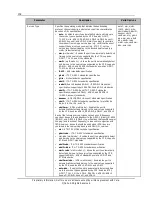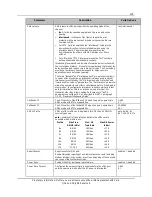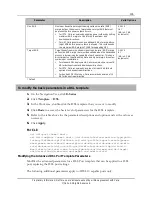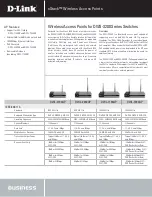
120
Proprietary Information: Not for use or disclosure except by written agreement with Calix.
© Calix. All Rights Reserved.
Query
Report
Join
Leave (IGMP version 2)
The system forwards multicast traffic destined for multicast groups (discovered through
IGMP snooping) to ports that are members of that group. The system also discards multicast
traffic destined for multicast groups that it does not recognize. IGMP snooping generates no
additional network traffic, allowing you to significantly reduce multicast traffic passing
through your device.
Configuration guidelines
The IGMP snooping is enabled on a per-VLAN basis.
You can edit the system-default IGMP profile or create a custom IGMP profile.
The IGMP profile applied to a VLAN only takes effect if the VLAN IGMP mode =
proxy or snoop-suppress.
IGMPv3 is only available in Proxy IGMP mode and does not operate in snoop-suppress
mode.
All nodes in an ERPS or G.8032v2 ring must have the same VLAN components
configured for video traffic to flow:
IGMP mode must be all proxy or all snoop-suppress
IGMP version must be all v2, v3 or auto
For ERPS and G.8032v2 ring configurations:
The ring node with a direct connection to the mrouter can be provisioned as
IGMPv3 and operate as v3. If at least one node in the ring does not support
IGMPv3, all of the other nodes in the ring not connected to the mrounter will
operate as IGMPv2 regardless of the provisioned IGMP version (v2, v3, or auto). If
or when all ring nodes become IGMPv3 compatible, the nodes operating version will
transition to IGMPv3, regardless of the provisioned IGMP version (v2, v3, or auto).
That is, the ring node that is connected to the mrouter dictates the operating version
of all the ring nodes, assuming they are all IGMPv3 capable.
For ring nodes with no directly attached routers, set the Router Learning Mode to
Static-and-Dynamic. This ensures that only the ring is “learned” or allowed to be the
multicast router source so that subtended RSTP rings that might incorrectly flood a
general query around the RSTP rings (typically during a topology change) are never
learned as the querying router.
For ring nodes with a direct connection to the multicast router, configure statically-
defined router ports to identify the uplink. See Creating VLAN Members.
Multicast traffic will not be allowed to traverse ports blocked by the ring protection
protocol.
















































